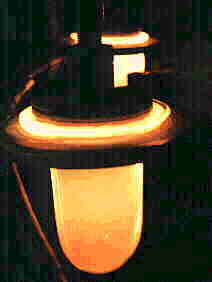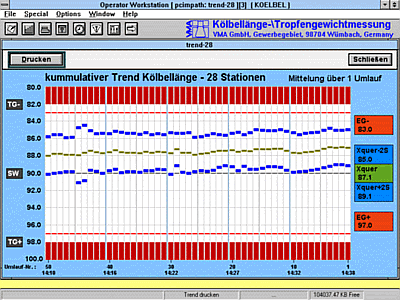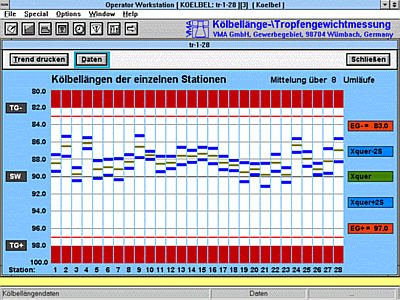- to measure the length of parisons in a non-contact way
- to display the measured values of each station of the blowing machine graphically
- to display the trend graphs of the length
- to evaluate he measured values and to store them on the hard disc
Structure and Measuring Principle
The device is made up of the camera and the electronic unit. The camera comprises a CCD-sensor having 2048 pixels. The camera can be moved by means of motor drive. This way the point of view at the periphery of the blowing machine can be set. In general this is an area immediately ahead the point where the mould is closed. The point of view is marked by means of a laser pointer. This way the adjustment is assisted.
The device evaluates the lower edge of the parison by using the natural radiation of the hot glass. A linking with the blowing machine is only necessary, as a station trigger for the station number 1 is required for a clear association of the measured values to the stations. Otherwise, the device works autonomous.
Installation
The camera is fixed in a suited distance beside the blowing machine at a steady pillar, so that there is no handicap for the machine staff.
The camera unit is linked with the electronic unit by using a cable with approx. 25 m length. The electronic unit is installed inside a cabinet, which is put up beside the blowing machine. It contains the actual measuring computer and the controlling of the camera as well as a PC with a real-time and multi-task software.
Parameters
- CCD row sensor: 2048 pixels
- Testing frequency: 500 /s
- Exposure frequency: automatically
- Display of the measured values: 3 digits
- Interface: RS 232
- Main computer: PC
- Visualisation software: P-CIM
- stabilizing the glass forming
- proportionate wall thickness distribution
- no squeezed parison
Schott Zwiesel, Germany (2 units)


Trends of the parison length
averages and their variance
over one rotation each.

Lengths of parisions of the
single stations